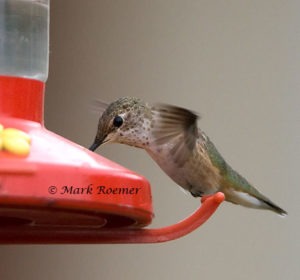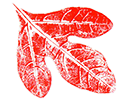It’s hard to believe that it is already the middle of October. This year has zoomed by – there are so many things that I wanted to get done this year that I haven’t even started. This weekend’s cold snap served as a reminder that winter really is just around the corner. It’s time to re-evaluate that project list and decide what has to be done before winter gets here, what can be done even if it is cold outside, and what moves to next year’s list.
This is also a busy time for the pollinators as they prepare for winter too. A few flowers are still blooming, but they’ll only be around for a few more weeks. Once we get a hard, killing frost, all pollinators better have accomplished whatever they need to do in order to survive the winter. For hummingbirds and some butterflies, that means migrating south.
Many people take their hummingbird feeders down early in the fall because they are afraid leaving the feeders up may make the hummingbirds stay too long. Research shows that isn’t the case. The hummingbird migration is triggered by day-length. Leaving hummingbird feeders up at this time of year can even help late migrators by supplementing the dwindling natural food supply.

According to the Journey North 2015 Fall Hummingbird Migration map, there are still several ruby-throated hummingbirds being reported north of us. So if you leave your hummingbird feeder up for a couple more weeks, you might get a visit from one of those stragglers. There is also another reason to leave your hummingbird feeders up and that is our winter hummingbirds. I know – winter hummingbirds? What’s she talking about?
Every year a few odd ball hummingbirds show up during the winter in Kentucky. These hummingbirds usually end up being either rufous hummingbirds or Allen’s hummingbirds. Both rufous hummingbirds and Allen’s hummingbirds are western species of hummingbirds. Like our ruby-throated hummingbirds, they typically leave their summer nesting grounds and migrate to Central America for the winter. Some of them, however, end up in the east each year possibly after migrating to Central America, then crossing the Gulf, and heading back north.
Scientists are still studying this phenomenon. This is one of the many topics in wildlife biology where there are more questions than answers. It’s also a topic that you can help scientists study. These winter hummingbirds can show up practically anywhere, at any time during the winter. More eyes watching for them, means more hummingbirds are likely to be spotted.
In early November 2011, I was sitting on my couch when I looked out the window and saw a hummingbird. It was hovering in front of my red curtains as if it was looking at a giant red flower. We had already taken our feeders down for the winter because it had been weeks since we’d seen a hummingbird. I was very excited when I saw the hummingbird because I knew that most ruby-throated hummingbirds have passed through Kentucky by mid to late October. After November 1, all hummingbirds spotted in Kentucky are considered possible vagrants. The fact that we hadn’t seen any hummingbirds recently added to the likelihood that this hummingbird was something different. We quickly put the feeders back up and contacted the Kentucky Ornithological Society.
It took a couple of weeks, but the experts were finally able to capture, band, and positively identify our hummingbird as an immature, female rufous hummingbird. Six rufous hummingbirds, including ours, were confirmed in Kentucky that winter. We kept our feeder out over the winter – bringing it in at night when the temperature dropped below freezing and putting it back out first thing in the morning. There were several days when I watched it feed just after dawn. I didn’t see her every day, but rarely more than a day or two went by without my husband or I seeing her.
It was fun watching her and after a couple of months she disappeared. She had already survived the worst of the winter, so we assumed that she headed further north on her migration back to her nesting grounds. I was told that some of the rufous hummingbirds will hit the nesting grounds when there is still snow on the ground – definitely not the same as the conditions when our ruby-throated hummingbirds return to their Kentucky nesting grounds.
We’ve moved since then and haven’t been lucky enough to have a winter hummingbird show up at the farm. I keep watching and hoping. Now you can join me in the search for winter hummingbirds.
If you see a hummingbird over the next couple of weeks, put your hummingbird feeders back up if you have taken them down. It could be a late ruby-throated or it could be one of our western visitors. If it is a ruby-throated, then it will likely continue migrating – wintering ruby-throated hummingbirds are very rare.
If you see a hummingbird after November 1, put your feeders back up and contact one of the Kentucky Ornithological Society officers. They can put you in touch with someone who can help confirm what species you have – hummingbirds in winter plumage, especially immature birds, are hard to identify. They can also put you in contact with someone who is trained at catching and banding hummingbirds. Banding the hummingbird allows that individual bird to be identified if it is caught again or if it returns next year. Also, let me know just because I’m curious and enjoy hearing stories about stuff like this.

This article was part of Shannon’s original Kentucky Pollinators and Backyard Wildlife blog which evolved into the blog for Backyard Ecology.

Backyard Ecology: Exploring Nature in Your Backyard
Nature isn’t just “out there.” It’s all around us, including right outside our doors. Hi, my name is Shannon Trimboli, and I am the host of Backyard Ecology. I live in southcentral Kentucky and am a wildlife biologist, educator, author, beekeeper, and owner of a nursery specializing in plants for pollinators and wildlife conservation. I invite you to join me as we ignite our curiosity and natural wonder, explore our yards and communities, and improve our local pollinator and wildlife habitat. Learn more or subscribe to my email list at www.backyardecology.net.

Leave a Reply